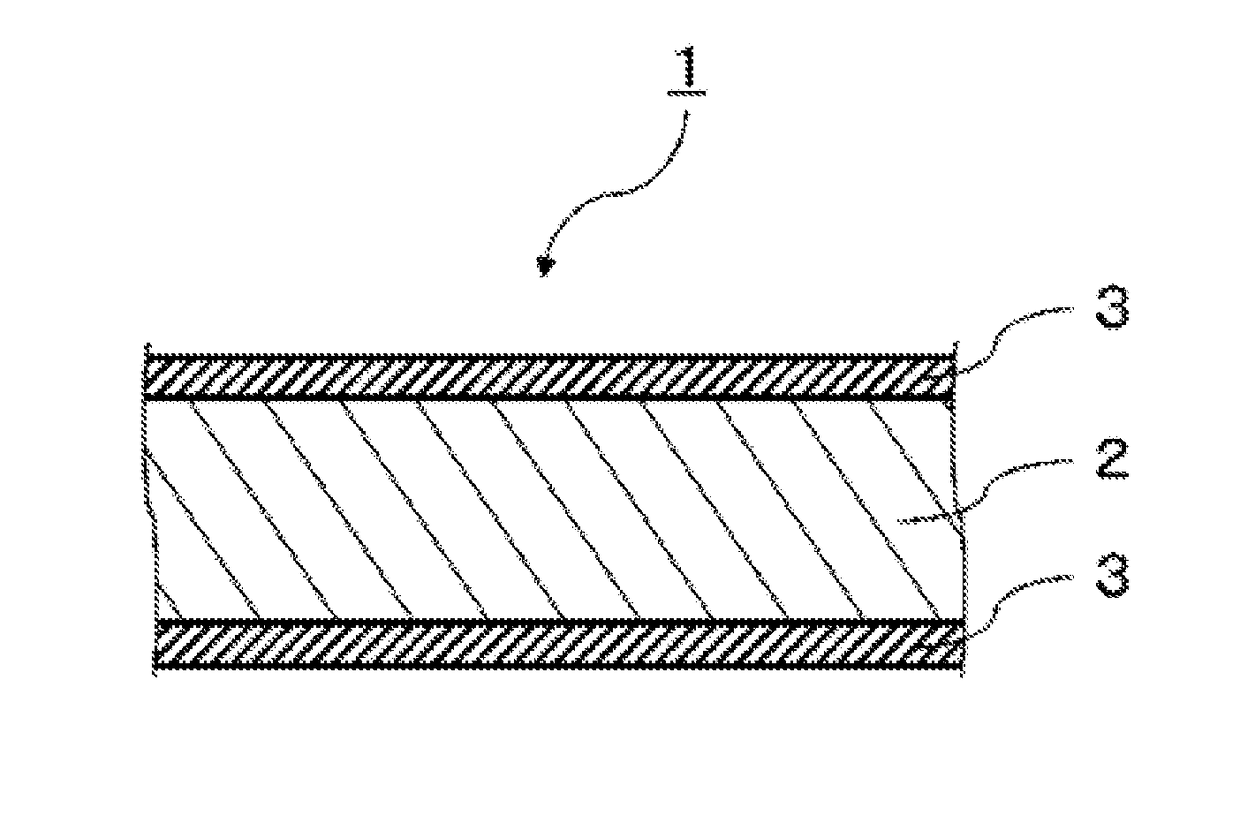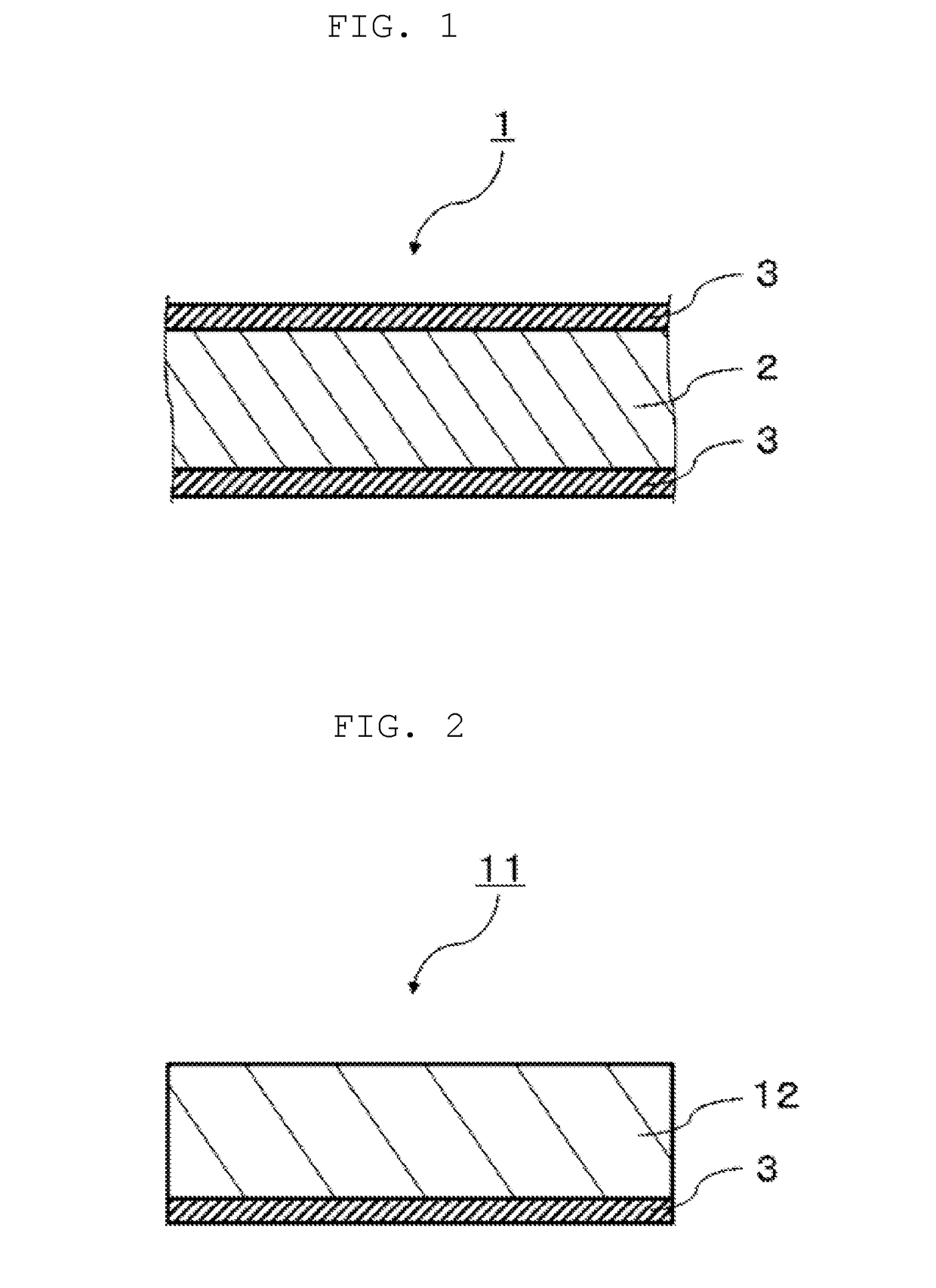Metal-clad laminate and metal foil with resin
a metal foil and metal-clad technology, applied in the field of metal-clad laminates and metal-clad foils with resin, can solve the problems of transmission loss caused by a conductor or a dielectric member, and achieve the effect of reducing transmission loss, excellent heat resistance and transmission characteristics, and less likely to increase transmission loss
- Summary
- Abstract
- Description
- Claims
- Application Information
AI Technical Summary
Benefits of technology
Problems solved by technology
Method used
Image
Examples
examples
[0114]First, a modified polyphenylene ether copolymer was synthesized. An average number of phenolic hydroxyl groups at a molecular terminal per one molecule of polyphenylene ether is indicated as a number of terminal hydroxyl groups.
[Synthesis of Modified Polyphenylene Ether 1 (Modified PPE1)]
[0115]A polyphenylene ether and chloromethylstyrene were reacted to obtain modified polyphenylene ether 1 (modified PPE1).
[0116]Specifically, in a 1 L three-neck flask equipped with a temperature controller, a stirrer, a cooling installation, and a dropping funnel, 200 g of polyphenylene ether (polyphenylene ether having a structure shown in formula (5), SA90 manufactured by SABIC Innovative Plastics, intrinsic viscosity (IV) 0.083 dl / g, number of terminal hydroxyl groups 1.9, weight average molecular weight Mw 2000), 30 g of a mixture of p-chloromethylstyrene and m-chloromethylstyrene in a mass ratio of 50:50 (chloromethylstyrene:CMS, manufactured by TOKYO CHEMICAL INDUSTRY CO., LTD.), 1.227 ...
example 6
[0154]Using the resin varnish, a copper foil with resin (RCC) was prepared. The resin varnish was applied on a copper foil so that cured resin varnish gave a thicknesses of 130 μm, and dried by heating at 130° C. for 3 minutes until the resin varnish became a half-cured state, to give RCC.
[0155]The laminate for evaluation and RCC prepared as described above were evaluated by methods described below.
[Dielectric Characteristics (Relative Dielectric Constant (Dk) and Dielectric Dissipation Factor (Df))]
[0156]A relative dielectric constant and a dielectric dissipation factor of each substrate for evaluation (copper-clad laminate and RCC obtained in the above) at 10 GHz were measured by the cavity resonator perturbation method. Specifically, a relative dielectric constant and a dielectric dissipation factor of the substrate for evaluation were measured at 10 GHz with use of a network analyzer (N5230A manufactured by Agilent Technologies).
[Transmission Characteristics (15 GHz)]
[0157]First...
PUM
| Property | Measurement | Unit |
|---|---|---|
| average roughness | aaaaa | aaaaa |
| relative dielectric constant | aaaaa | aaaaa |
| relative dielectric constant | aaaaa | aaaaa |
Abstract
Description
Claims
Application Information
 Login to View More
Login to View More - R&D
- Intellectual Property
- Life Sciences
- Materials
- Tech Scout
- Unparalleled Data Quality
- Higher Quality Content
- 60% Fewer Hallucinations
Browse by: Latest US Patents, China's latest patents, Technical Efficacy Thesaurus, Application Domain, Technology Topic, Popular Technical Reports.
© 2025 PatSnap. All rights reserved.Legal|Privacy policy|Modern Slavery Act Transparency Statement|Sitemap|About US| Contact US: help@patsnap.com



